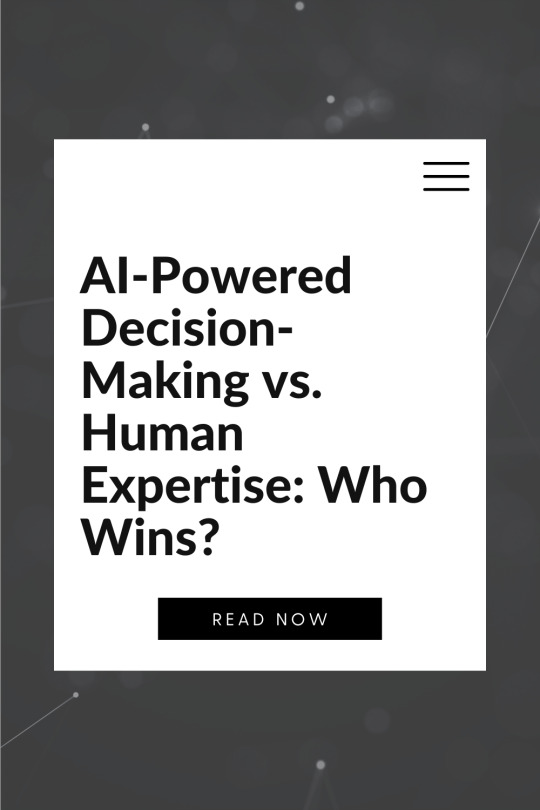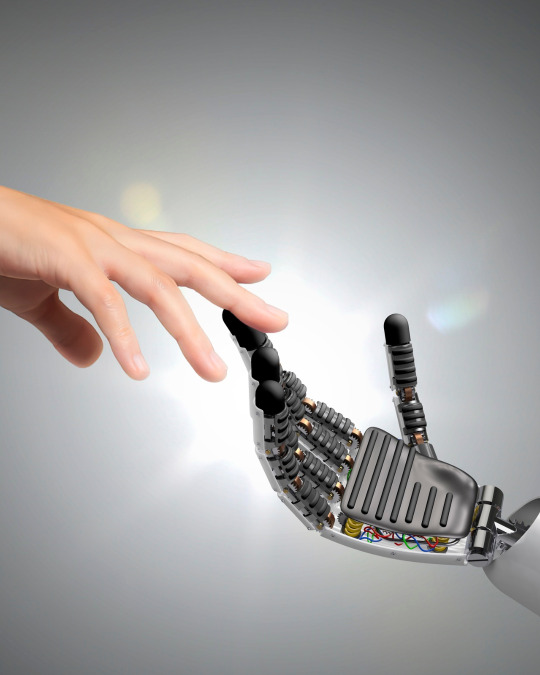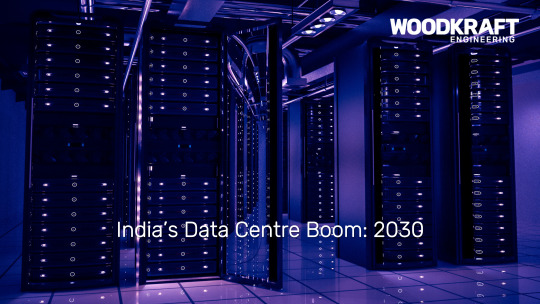#AI CloudComputing
Explore tagged Tumblr posts
Text
Microsoft Unveils Majorana 1: A Quantum Computing Breakthrough

Microsoft has announced a major advancement in quantum computing with the launch of its first quantum computing chip, Majorana 1. This breakthrough follows nearly two decades of research in the field and is a crucial step toward the company's goal of developing large-scale quantum computers. The company claims that in order to create this chip, it had to engineer an entirely new state of matter, which it refers to as a topological state. This new state of matter is key to the stability and efficiency of quantum computing, which has long faced challenges due to the fragile nature of qubits.
Topological Qubits – The chip contains eight topological qubits, which provide higher stability compared to conventional qubits used by competitors like Google and IBM.Exotic Material Composition – The chip is built using indium arsenide (a semiconductor) and aluminum (a superconductor), helping to create the necessary environment for quantum behavior.Atom-by-Atom Engineering – Microsoft had to precisely align atoms to achieve the required conditions for a topological state, making this a significant materials science achievement.
#Microsoft#QuantumComputing#Majorana1#TopologicalState#TechInnovation#Azure#AI#Superconductors#Research#CloudComputing
3 notes
·
View notes
Text

AI’s Role in Business Process Automation
Automation has come a long way from simply replacing manual tasks with machines. With AI stepping into the scene, business process automation is no longer just about cutting costs or speeding up workflows—it’s about making smarter, more adaptive decisions that continuously evolve. AI isn't just doing what we tell it; it’s learning, predicting, and innovating in ways that redefine how businesses operate.
From hyperautomation to AI-powered chatbots and intelligent document processing, the world of automation is rapidly expanding. But what does the future hold?
What is Business Process Automation?
Business Process Automation (BPA) refers to the use of technology to streamline and automate repetitive, rule-based tasks within an organization. The goal is to improve efficiency, reduce errors, cut costs, and free up human workers for higher-value activities. BPA covers a wide range of functions, from automating simple data entry tasks to orchestrating complex workflows across multiple departments.
Traditional BPA solutions rely on predefined rules and scripts to automate tasks such as invoicing, payroll processing, customer service inquiries, and supply chain management. However, as businesses deal with increasing amounts of data and more complex decision-making requirements, AI is playing an increasingly critical role in enhancing BPA capabilities.
AI’s Role in Business Process Automation
AI is revolutionizing business process automation by introducing cognitive capabilities that allow systems to learn, adapt, and make intelligent decisions. Unlike traditional automation, which follows a strict set of rules, AI-driven BPA leverages machine learning, natural language processing (NLP), and computer vision to understand patterns, process unstructured data, and provide predictive insights.
Here are some of the key ways AI is enhancing BPA:
Self-Learning Systems: AI-powered BPA can analyze past workflows and optimize them dynamically without human intervention.
Advanced Data Processing: AI-driven tools can extract information from documents, emails, and customer interactions, enabling businesses to process data faster and more accurately.
Predictive Analytics: AI helps businesses forecast trends, detect anomalies, and make proactive decisions based on real-time insights.
Enhanced Customer Interactions: AI-powered chatbots and virtual assistants provide 24/7 support, improving customer service efficiency and satisfaction.
Automation of Complex Workflows: AI enables the automation of multi-step, decision-heavy processes, such as fraud detection, regulatory compliance, and personalized marketing campaigns.
As organizations seek more efficient ways to handle increasing data volumes and complex processes, AI-driven BPA is becoming a strategic priority. The ability of AI to analyze patterns, predict outcomes, and make intelligent decisions is transforming industries such as finance, healthcare, retail, and manufacturing.
“At the leading edge of automation, AI transforms routine workflows into smart, adaptive systems that think ahead. It’s not about merely accelerating tasks—it’s about creating an evolving framework that continuously optimizes operations for future challenges.”
— Emma Reynolds, CTO of QuantumOps
Trends in AI-Driven Business Process Automation
1. Hyperautomation
Hyperautomation, a term coined by Gartner, refers to the combination of AI, robotic process automation (RPA), and other advanced technologies to automate as many business processes as possible. By leveraging AI-powered bots and predictive analytics, companies can automate end-to-end processes, reducing operational costs and improving decision-making.
Hyperautomation enables organizations to move beyond simple task automation to more complex workflows, incorporating AI-driven insights to optimize efficiency continuously. This trend is expected to accelerate as businesses adopt AI-first strategies to stay competitive.
2. AI-Powered Chatbots and Virtual Assistants
Chatbots and virtual assistants are becoming increasingly sophisticated, enabling seamless interactions with customers and employees. AI-driven conversational interfaces are revolutionizing customer service, HR operations, and IT support by providing real-time assistance, answering queries, and resolving issues without human intervention.
The integration of AI with natural language processing (NLP) and sentiment analysis allows chatbots to understand context, emotions, and intent, providing more personalized responses. Future advancements in AI will enhance their capabilities, making them more intuitive and capable of handling complex tasks.
3. Process Mining and AI-Driven Insights
Process mining leverages AI to analyze business workflows, identify bottlenecks, and suggest improvements. By collecting data from enterprise systems, AI can provide actionable insights into process inefficiencies, allowing companies to optimize operations dynamically.
AI-powered process mining tools help businesses understand workflow deviations, uncover hidden inefficiencies, and implement data-driven solutions. This trend is expected to grow as organizations seek more visibility and control over their automated processes.
4. AI and Predictive Analytics for Decision-Making
AI-driven predictive analytics plays a crucial role in business process automation by forecasting trends, detecting anomalies, and making data-backed decisions. Companies are increasingly using AI to analyze customer behaviour, market trends, and operational risks, enabling them to make proactive decisions.
For example, in supply chain management, AI can predict demand fluctuations, optimize inventory levels, and prevent disruptions. In finance, AI-powered fraud detection systems analyze transaction patterns in real-time to prevent fraudulent activities. The future of BPA will heavily rely on AI-driven predictive capabilities to drive smarter business decisions.
5. AI-Enabled Document Processing and Intelligent OCR
Document-heavy industries such as legal, healthcare, and banking are benefiting from AI-powered Optical Character Recognition (OCR) and document processing solutions. AI can extract, classify, and process unstructured data from invoices, contracts, and forms, reducing manual effort and improving accuracy.
Intelligent document processing (IDP) combines AI, machine learning, and NLP to understand the context of documents, automate data entry, and integrate with existing enterprise systems. As AI models continue to improve, document processing automation will become more accurate and efficient.
Going Beyond Automation
The future of AI-driven BPA will go beyond automation—it will redefine how businesses function at their core. Here are some key predictions for the next decade:
Autonomous Decision-Making: AI systems will move beyond assisting human decisions to making autonomous decisions in areas such as finance, supply chain logistics, and healthcare management.
AI-Driven Creativity: AI will not just automate processes but also assist in creative and strategic business decisions, helping companies design products, create marketing strategies, and personalize customer experiences.
Human-AI Collaboration: AI will become an integral part of the workforce, working alongside employees as an intelligent assistant, boosting productivity and innovation.
Decentralized AI Systems: AI will become more distributed, with businesses using edge AI and blockchain-based automation to improve security, efficiency, and transparency in operations.
Industry-Specific AI Solutions: We will see more tailored AI automation solutions designed for specific industries, such as AI-driven legal research tools, medical diagnostics automation, and AI-powered financial advisory services.
AI is no longer a futuristic concept—it’s here, and it’s already transforming the way businesses operate. What’s exciting is that we’re still just scratching the surface. As AI continues to evolve, businesses will find new ways to automate, innovate, and create efficiencies that we can’t yet fully imagine.
But while AI is streamlining processes and making work more efficient, it’s also reshaping what it means to be human in the workplace. As automation takes over repetitive tasks, employees will have more opportunities to focus on creativity, strategy, and problem-solving. The future of AI in business process automation isn’t just about doing things faster—it’s about rethinking how we work all together.
Learn more about DataPeak:
#datapeak#factr#technology#agentic ai#saas#artificial intelligence#machine learning#ai#ai-driven business solutions#machine learning for workflow#ai solutions for data driven decision making#ai business tools#aiinnovation#digitaltools#digital technology#digital trends#dataanalytics#data driven decision making#data analytics#cloudmigration#cloudcomputing#cybersecurity#cloud computing#smbs#chatbots
2 notes
·
View notes
Text

Acadecraft Partners with Wadhwani Foundation's Government Digital Transformation Initiative to Develop eLearning Courses
#digitaltransformation#technology#innovation#business#digitalmarketing#ai#digital#artificialintelligence#software#machinelearning#automation#businessgrowth#tech#iot#techinnovation#bigdata#cybersecurity#cloud#data#cloudcomputing#smallbusiness#customerexperience#marketing#sap#webdevelopment#erp#blockchain#analytics#ecommerce#datascience
2 notes
·
View notes
Text

#fibonacci sequence#fibonacci spiral#fibonacci retracement#clouds#iphone#iphonography#adult swim#ai artist#design#architecture#magnus carlsen#chess#kobe bryant#chief keef#positive thinking#cloudcore#cloudcomputing#consciousness
2 notes
·
View notes
Text
#Azure#MicrosoftAzure#CloudComputing#DigitalTransformation#Cybersecurity#DevOps#MicrosoftPartner#MSPartner#Microsoft365#AI
2 notes
·
View notes
Text
youtube
Top 5 Cloud Computing Skills for 2025 (Salaries Included)
In this video, he share the top 5 Cloud Computing Skills for 2025, and he included all the salaries for these skills as well as the Cloud Computing Jobs you can apply for.
#education#Cloud Computing Skills#cloudcomputing#educate yourself#educate yourselves#security#technology#awscloud#aws cloud#ai machine learning#Top 5 Cloud Computing Skills for 2025#education for all#youtube#Youtube
2 notes
·
View notes
Text
Battling Bakeries in an AI Arms Race! Inside the High-Tech Doughnut Feud

#AI#TechSavvy#commercialwar#AIAccelerated#EdgeAnalytic#CloudComputing#DeepLearning#NeuralNetwork#AICardUpgradeCycle#FutureProof#ComputerVision#ModelTraining#artificialintelligence#ai#Supergirl#Batman#DC Official#Home of DCU#Kara Zor-El#Superman#Lois Lane#Clark Kent#Jimmy Olsen#My Adventures With Superman
2 notes
·
View notes
Text
What sets Konnect Insights apart from other data orchestration and analysis tools available in the market for improving customer experiences in the aviation industry?
I can highlight some general factors that may set Konnect Insights apart from other data orchestration and analysis tools available in the market for improving customer experiences in the aviation industry. Keep in mind that the competitive landscape and product offerings may have evolved since my last knowledge update. Here are some potential differentiators:

Aviation Industry Expertise: Konnect Insights may offer specialized features and expertise tailored to the unique needs and challenges of the aviation industry, including airports, airlines, and related businesses.
Multi-Channel Data Integration: Konnect Insights may excel in its ability to integrate data from a wide range of sources, including social media, online platforms, offline locations within airports, and more. This comprehensive data collection can provide a holistic view of the customer journey.
Real-Time Monitoring: The platform may provide real-time monitoring and alerting capabilities, allowing airports to respond swiftly to emerging issues or trends and enhance customer satisfaction.
Customization: Konnect Insights may offer extensive customization options, allowing airports to tailor the solution to their specific needs, adapt to unique workflows, and focus on the most relevant KPIs.
Actionable Insights: The platform may be designed to provide actionable insights and recommendations, guiding airports on concrete steps to improve the customer experience and operational efficiency.
Competitor Benchmarking: Konnect Insights may offer benchmarking capabilities that allow airports to compare their performance to industry peers or competitors, helping them identify areas for differentiation.
Security and Compliance: Given the sensitive nature of data in the aviation industry, Konnect Insights may include robust security features and compliance measures to ensure data protection and adherence to industry regulations.
Scalability: The platform may be designed to scale effectively to accommodate the data needs of large and busy airports, ensuring it can handle high volumes of data and interactions.
Customer Support and Training: Konnect Insights may offer strong customer support, training, and consulting services to help airports maximize the value of the platform and implement best practices for customer experience improvement.
Integration Capabilities: It may provide seamless integration with existing airport systems, such as CRM, ERP, and database systems, to ensure data interoperability and process efficiency.
Historical Analysis: The platform may enable airports to conduct historical analysis to track the impact of improvements and initiatives over time, helping measure progress and refine strategies.
User-Friendly Interface: Konnect Insights may prioritize a user-friendly and intuitive interface, making it accessible to a wide range of airport staff without requiring extensive technical expertise.

It's important for airports and organizations in the aviation industry to thoroughly evaluate their specific needs and conduct a comparative analysis of available solutions to determine which one aligns best with their goals and requirements. Additionally, staying updated with the latest developments and customer feedback regarding Konnect Insights and other similar tools can provide valuable insights when making a decision.
#DataOrchestration#DataManagement#DataOps#DataIntegration#DataEngineering#DataPipeline#DataAutomation#DataWorkflow#ETL (Extract#Transform#Load)#DataIntegrationPlatform#BigData#CloudComputing#Analytics#DataScience#AI (Artificial Intelligence)#MachineLearning#IoT (Internet of Things)#DataGovernance#DataQuality#DataSecurity
2 notes
·
View notes
Text

AWS で生成系 AI を簡単に試してみよう! | AWS AI Week for Developers (ビギナートラック)
#AIモデル解説#生成系AI#生成AI#AmazonSageMakerJumpStart#クラウド#アマゾン#amazon#aws#amazonwebservices#アマゾンウェブサービス#クラウドサービス#クラウドコンピューティング#cloud#cloudservice#cloudcomputing#クラウドプラットフォーム#cloudplatform#AWSスキルビルダー
0 notes
Text

Qatar Partners With Scale AI for AI-Powered Digital Transformation of Government Services
#digitaltransformation#technology#innovation#business#digitalmarketing#ai#digital#artificialintelligence#software#machinelearning#automation#businessgrowth#tech#iot#techinnovation#bigdata#cybersecurity#cloud#data#cloudcomputing#smallbusiness#customerexperience#marketing#sap#webdevelopment#erp#blockchain#analytics#ecommerce#datascience
2 notes
·
View notes
Text

AI-Powered Decision-Making vs. Human Expertise: Who Wins?
Artificial intelligence is already woven into the fabric of our daily lives. Whether you're getting personalized song suggestions on Spotify, seeing curated content on Netflix, navigating traffic with Google Maps, or having your email sorted by importance in Gmail, AI is quietly and powerfully shaping the choices we make. These AI-driven tools are making decisions on our behalf every day, often without us even realizing it.
As AI continues to evolve, its role is expanding from recommending entertainment to influencing high-stakes decisions in healthcare, finance, law enforcement, and beyond. This growing presence raises a critical question: Can AI truly make better decisions than experienced human professionals or does it still fall short in areas where human judgment and intuition reign supreme?

Understanding the Players: AI and Human Experts
What Is AI-Powered Decision-Making?
AI-powered decision-making refers to the use of algorithms, often driven by machine learning, neural networks, and deep learning, to analyze large datasets and generate insights, predictions, or recommendations. These systems can learn from experience, identify patterns humans may miss, and make decisions without fatigue or bias (at least in theory).
Key strengths include:
Speed and scale: AI can process terabytes of data in seconds.
Pattern recognition: It detects trends and anomalies better than humans in complex datasets.
Consistency: AI doesn’t suffer from emotions, distractions, or exhaustion.
What Defines Human Expertise?
Human expertise, on the other hand, is built on years, sometimes decades, of learning, intuition, and contextual understanding. An expert blends theoretical knowledge with practical experience, social awareness, and ethical judgment.
Human strengths include:
Contextual understanding: Experts can interpret ambiguous or nuanced situations.
Empathy and ethics: Humans bring emotional intelligence and moral reasoning to decisions.
Adaptability: Experts can pivot strategies in response to changing circumstances or incomplete data.
So, which is better? As with many complex questions, the answer depends on the context.
When AI Outperforms Humans
1. Data-Heavy Decisions
AI shines when the decision-making process requires analyzing vast amounts of data quickly. In fields like finance and healthcare, AI systems are revolutionizing decision-making.
Example: Medical diagnostics. AI algorithms trained on millions of medical images have demonstrated higher accuracy than radiologists in detecting certain cancers, such as breast and lung cancers. These systems can spot subtle patterns undetectable to the human eye and reduce diagnostic errors.
2. Predictive Analytics
AI’s ability to forecast outcomes based on historical data makes it incredibly powerful for strategic planning and operations.
Example: Retail and inventory management. AI can predict which products will be in demand, when restocking is necessary, and how pricing strategies will affect sales. Amazon’s supply chain and logistics systems are powered by such predictive tools, allowing for just-in-time inventory and efficient deliveries.
3. Repetitive, Rule-Based Tasks
AI thrives in environments where rules are clear and outcomes can be mathematically modelled.
Example: Autonomous vehicles. While not perfect, AI is capable of processing sensor data, mapping environments, and making real-time navigation decisions; tasks that are highly rule-based and repetitive.
Where Human Expertise Wins
1. Complex, Ambiguous Situations
Humans excel in “grey areas” where rules are unclear, data is incomplete, and judgment calls must be made.
Example: Crisis management. In rapidly evolving scenarios like natural disasters or geopolitical conflicts, experienced human leaders are better at weighing intangible factors such as public sentiment, cultural nuances, and ethical trade-offs.
2. Empathy and Human Interaction
Some decisions require understanding human emotions, motivations, and relationships which are areas where AI still lags significantly.
Example: Therapy and counselling. While AI chatbots can offer basic mental health support, human therapists offer empathy, intuition, and adaptive communication that machines cannot replicate.
3. Ethical Judgment
Ethical dilemmas often involve values, societal norms, and moral reasoning. Human decision-makers are uniquely equipped to handle such complexity.
Example: Autonomous weapons and warfare. Should an AI-powered drone have the authority to make life-or-death decisions? Most ethicists and governments agree that moral accountability should rest with humans, not algorithms.
“The goal is to create AI that can collaborate with people to solve the world’s toughest problems, not replace them.”
— Demis Hassabis (CEO and Co-founder of DeepMind)
AI vs. Human in Chess and Beyond
In 1997, IBM’s Deep Blue defeated world chess champion Garry Kasparov; a symbolic moment that marked AI’s growing capabilities. Today, AI engines like AlphaZero play chess at a superhuman level, discovering strategies that human players never imagined.
But even Kasparov himself has advocated for “centaur chess” which is a form of play where humans and AI collaborate. He argues that human intuition, combined with machine calculation, makes for the most powerful chess strategy.
This concept extends beyond the game board. In many domains, the ideal approach may not be AI versus humans, but AI with humans.
Toward a Collaborative Future: The Human-AI Team
Rather than replacing humans, the most promising applications of AI lie in augmenting human decision-making. This “centaur model” or “human-in-the-loop” approach brings out the best in both.
Examples of Human-AI Collaboration:
Healthcare: AI can screen X-rays, while doctors make the final diagnosis and communicate with patients.
Recruitment: AI can sort resumes and highlight top candidates, but human recruiters assess cultural fit and conduct interviews.
Customer service: AI chatbots handle routine queries, while complex issues are escalated to human agents.
This hybrid approach ensures accuracy, empathy, and accountability, all while improving efficiency.
Challenges & Considerations
Even as we embrace AI, several challenges must be addressed:
Bias in AI: If the data AI learns from is biased, its decisions will be too. Human oversight is essential to ensure fairness and ethical outcomes.
Transparency: Many AI systems are “black boxes,” making it hard to understand how decisions are made.
Accountability: Who is responsible when an AI system makes a wrong call? Legal and regulatory frameworks are still catching up.
Job displacement: As AI takes over certain tasks, reskilling and transitioning the workforce become critical priorities.
Final Verdict: Who Wins?
The battle between AI and human expertise doesn’t have a single winner because it's not a zero-sum game. AI wins in data-heavy, rules-based, and high-speed environments. Humans excel in judgment, empathy, and moral reasoning. The true power lies in collaboration.
As we move into the next phase of digital transformation, the organizations and societies that will thrive are those that leverage both machine precision and human wisdom. In this partnership, AI isn’t replacing us, it’s empowering us.
So the real question isn’t "who wins?" it’s "how do we win together?"
Learn more about DataPeak:
#datapeak#factr#saas#technology#agentic ai#artificial intelligence#machine learning#ai#ai-driven business solutions#machine learning for workflow#ai solutions for data driven decision making#ai business tools#aiinnovation#digitaltools#digital technology#digital trends#dataanalytics#data driven decision making#data analytics#ai platform for business process automation#ai driven business solutions#ai business solutions#business#cloudmigration#cloudcomputing#no code
0 notes
Text
Architecting for AI- Effective Data Management Strategies in the Cloud
What good is AI if the data feeding it is disorganized, outdated, or locked away in silos?
How can businesses unlock the full potential of AI in the cloud without first mastering the way they handle data?
And for professionals, how can developing Cloud AI skills shape a successful AI cloud career path?
These are some real questions organizations and tech professionals ask every day. As the push toward automation and intelligent systems grows, the spotlight shifts to where it all begins, data. If you’re aiming to become an AI cloud expert, mastering data management in the cloud is non-negotiable.
In this blog, we will explore human-friendly yet powerful strategies for managing data in cloud environments. These are perfect for businesses implementing AI in the cloud and individuals pursuing AI Cloud Certification.
1. Centralize Your Data, But Don’t Sacrifice Control
The first step to architecting effective AI systems is ensuring your data is all in one place, but with rules in place. Cloud AI skills come into play when configuring secure, centralized data lakes using platforms like AWS S3, Azure Data Lake, or Google Cloud Storage.
For instance, Airbnb streamlined its AI pipelines by unifying data into Amazon S3 while applying strict governance with AWS Lake Formation. This helped their teams quickly build and train models for pricing and fraud detection, without dealing with messy, inconsistent data.
Pro Tip-
Centralize your data, but always pair it with metadata tagging, cataloging, and access controls. This is a must-learn in any solid AI cloud automation training program.
2. Design For Scale: Elasticity Over Capacity
AI workloads are not static—they scale unpredictably. Cloud platforms shine when it comes to elasticity, enabling dynamic resource allocation as your needs grow. Knowing how to build scalable pipelines is a core part of AI cloud architecture certification programs.
One such example is Netflix. It handles petabytes of viewing data daily and processes it through Apache Spark on Amazon EMR. With this setup, they dynamically scale compute power depending on the workload, powering AI-based recommendations and content optimization.
Human Insight-
Scalability is not just about performance. It’s about not overspending. Smart scaling = cost-effective AI.
3. Don’t Just Store—Catalog Everything
You can’t trust what you can’t trace. A reliable data catalog and lineage system ensures AI models are trained on trustworthy data. Tools like AWS Glue or Apache Atlas help track data origin, movement, and transformation—a key concept for anyone serious about AI in the cloud.
To give you an example, Capital One uses data lineage tools to manage regulatory compliance for its AI models in credit risk and fraud detection. Every data point can be traced, ensuring trust in both model outputs and audits.
Why it matters-
Lineage builds confidence. Whether you’re a company building AI or a professional on an AI cloud career path, transparency is essential.
4. Build for Real-Time Intelligence
The future of AI is real-time. Whether it’s fraud detection, customer personalization, or predictive maintenance, organizations need pipelines that handle data as it flows in. Streaming platforms like Apache Kafka and AWS Kinesis are core technologies for this.
For example, Uber’s Michelangelo platform processes real-time location and demand data to adjust pricing and ETA predictions dynamically. Their cloud-native streaming architecture supports instant decision-making at scale.
Career Tip-
Mastering stream processing is key if you want to become an AI cloud expert. It’s the difference between reactive and proactive AI.
5. Bake Security and Privacy into Your Data Strategy
When you’re working with personal data, security isn’t optional—it’s foundational. AI architectures in the cloud must comply with GDPR, HIPAA, and other regulations, while also protecting sensitive information using encryption, masking, and access controls.
Salesforce, with its AI-powered Einstein platform, ensures sensitive customer data is encrypted and tightly controlled using AWS Key Management and IAM policies.
Best Practice-
Think “privacy by design.” This is a hot topic covered in depth during any reputable AI Cloud certification.
6. Use Tiered Storage to Optimize Cost and Speed
Not every byte of data is mission-critical. Some data is hot (frequently used), some cold (archived). An effective AI cloud architecture balances cost and speed with a multi-tiered storage strategy.
For instance, Pinterest uses Amazon S3 for high-access data, Glacier for archival, and caching layers for low-latency AI-powered recommendations. This approach keeps costs down while delivering fast, accurate results.
Learning Tip-
This is exactly the kind of cost-smart design covered in AI cloud automation training courses.
7. Support Cross-Cloud and Hybrid Access
Modern enterprises often operate across multiple cloud environments, and data can’t live in isolation. Cloud data architectures should support hybrid and multi-cloud scenarios to avoid vendor lock-in and enable agility.
Johnson & Johnson uses BigQuery Omni to analyze data across AWS and Azure without moving it. This federated approach supports AI use cases in healthcare, ensuring data residency and compliance.
Why it matters?
The future of AI is multi-cloud. Want to stand out? Pursue an AI cloud architecture certification that teaches integration, not just implementation.
Wrapping Up- Your Data Is the AI Foundation
Without well-architected data strategies, AI can’t perform at its best. If you’re leading cloud strategy as a CTO or just starting your journey to become an AI cloud expert, one thing becomes clear early on—solid data management isn’t optional. It’s the foundation that supports everything from smarter models to reliable performance. Without it, even the best AI tools fall short.
Here’s what to focus on-
Centralize data with control
Scale infrastructure on demand
Track data lineage and quality
Enable real-time processing
Secure data end-to-end
Store wisely with tiered solutions
Built for hybrid, cross-cloud access
Ready To Take the Next Step?
If you are looking forward to building smarter systems or your career, now is the time to invest in the future. Consider pursuing an AI Cloud Certification or an AI Cloud Architecture Certification. These credentials not only boost your knowledge but also unlock new opportunities on your AI cloud career path.
Consider checking AI CERTs AI+ Cloud Certification to gain in-demand Cloud AI skills, fast-track your AI cloud career path, and become an AI cloud expert trusted by leading organizations. With the right Cloud AI skills, you won’t just adapt to the future—you’ll shape it.
Enroll today!
0 notes
Text
Pneuma Cloud Corporation
#PneumaCloudCorporation#CloudTechnology#Innovation#DigitalTransformation#TechTrends#CloudSolutions#BusinessGrowth#FutureOfWork#DataSecurity#TechInnovation#SaaS#EnterpriseSolutions#CloudComputing#TechForGood#RemoteWork#AI#BigData#ITInfrastructure#Scalability#PneumaCloud
0 notes
Text
Top 7 Cloud-Based Analytics Tools Every Enterprise Needs to Know
Hey there, data-driven folks! Struggling to make sense of your business’s mountain of data? Our latest article, 7 Cloud-Based Analytics Tools Every Enterprise Should Know, is your go-to guide for simplifying the chaos. We break down top tools like Tableau Cloud, Microsoft Power BI, and Databricks, showing you how they turn raw data into clear, actionable insights. From stunning dashboards to AI-powered predictions, these cloud-based platforms are game-changers for any enterprise. Plus, with cloud computing services like Kindlebit’s, setting them up is a breeze.
Check out the full article to find the perfect tool to help your business thrive!
0 notes
Text
India’s Data Centre Future is Here.

📊 Colliers and Deloitte estimate 4,500+ MW of capacity by 2030 🏗️ $25B in investments ⚡ 45 TWh of power demand 🏢 50 million sq. ft. of infrastructure required
This isn’t just digital transformation — it’s a construction and engineering challenge of national scale.
🔧 At Woodkraft, we’re building for this AI-powered future.
🔗 Full article here: https://www.woodkraft.com/indias-data-centre-boom-2030/
1 note
·
View note